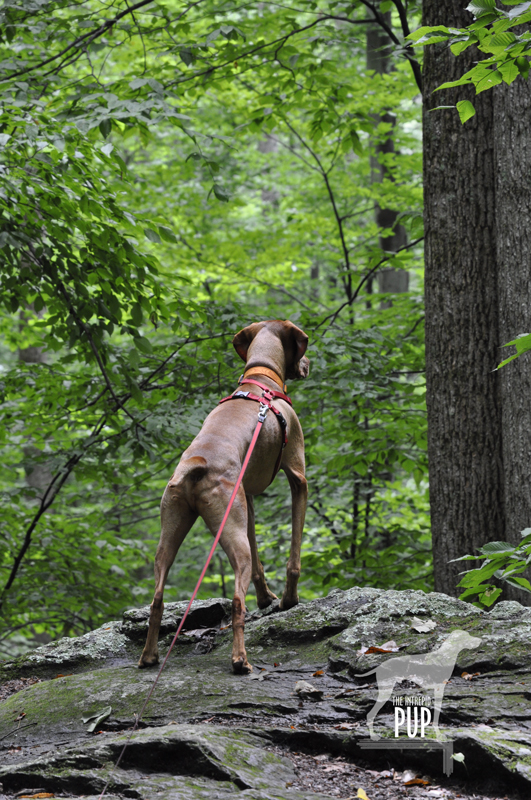
That got your attention, didn’t it? OK, so while Tavish the Intrepid Pup technically didn’t stumble upon the mystical paradise described in Lost Horizon, he came pretty close to a Shangri-La. In Thurmont, Maryland, that is.
Catoctin Mountain Park, administered by the National Park Service, is some 10,000 acres of hardwood forest interspersed with recreational areas and a lot of history. Its past is interwoven with that of sawmills, whiskey stills, tanneries, charcoal production, and pig iron. In the 1930s it was shaped into the Catoctin Recreational Demonstration Area by the WPA and the Civilian Conservation Corps. Of this expanse, the Hi-Catoctin Camp for families of federal workers caught the eye of President Franklin D. Roosevelt as a viable spot for a presidential retreat. Roosevelt hadn’t been too keen on adopting his predecessor President Herbert Hoover’s retreat (Camp Rapidan) in Shenandoah, in part because its remoteness presented challenges for Roosevelt’s physical condition. But Hi-Catoctin was just an hour northwest of Washington, DC, and refreshingly cooler in the summer to boot. Roosevelt first visited Catoctin in April 1942, and the existing camp was quickly converted to a presidential retreat he dubbed “Shangri-La” after the utopia in James Hilton’s popular 1933 novel. It became a true haven for the president during World War II, and British Prime Minister Winston Churchill even came there for the Third Washington Conference in 1943. After Roosevelt’s death, President Harry Truman recognized the importance and significance of Shangri-La and preserved it through an arrangement with the National Park Service. When President Dwight D. Eisenhower came into office, he readily embraced Shangri-La but with one significant modification: he renamed it Camp David after his grandson! It’s kept that name ever since and has seen several historic moments, from visits by Leonid Brezhnev, Nikita Khrushchev, and Margaret Thatcher to the 1978 summit with Anwar Sadat and Menachem Begin culminating in the Camp David Accords. As you might suspect, Shangri-La (a.k.a. Camp David) is neither visible from any of the park roads nor open for visitation by the general public even if you do find it.
However, you have the whole rest of the park at your disposal, and with 25 miles of available hiking trails ranging from easy to strenuous, you can readily assemble an itinerary that strikes your fancy. We ended up covering about 5 miles during our visit by hiking the out-and-back Cunningham Falls Nature Trail (2.8 miles round-trip, with a nice view of the falls), the Hog Rock Nature Trail loop (1.5 miles, featuring 14 kinds of trees and nice vista of the Monocacy Valley), and the Blue Ridge Summit Trail (0.6 mile round-trip, with a rocky overlook at an elevation of 1520 ft). Just to manage expectations: at no time did Bo, President’s Obama’s Portuguese Water Dog, come bounding up to us. In fact, we were kind of surprised by how uncrowded the park was, but we chalked it up to the fact that rain in the forecast was keeping folks away. We’ll definitely be back to tackle some of the other routes!
 Dogging the Details
Dogging the Details
39°39′1.54″N, 77°27′50.65″W
Catoctin Mountain Park, Thurmont, Maryland
39°37′5.79″N, 77°24′56.46″W
The Cozy’s Camp David Museum, Thurmont, Maryland
[Update: The Cozy closed in June 2014]
This excursion is a solid “2” on the Intrepid Pup’s wag-a-meter. Catoctin is a great natural setting that welcomes leashed dogs, and the hiking trails are very well marked and maintained.
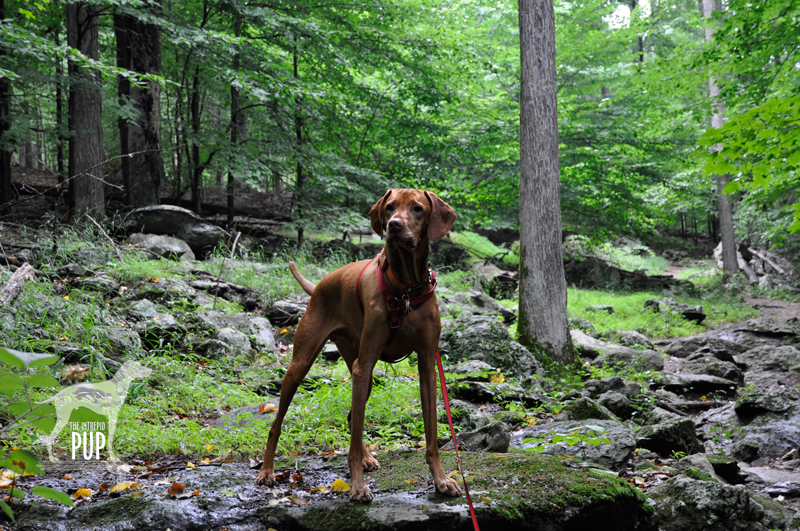
Tavish on the lush and shady Cunningham Falls trail. We passed a total of six other dogs on this popular route.
Make the Park Service’s Visitor Center at Catoctin Mountain Park your first stop. There is no entrance fee for the park, although rates do apply if you’ll be availing yourself of any of the four cabin camp rental sites. The ranger can outfit you with a trail map and recommend what hikes will best suit your group and the time you have available. Particularly neat is the park’s current initiative, the “Healthy Park | Healthy People Challenge.” You’re given a pamphlet listing a combination of 13 interpretive trails and scenic overlooks in the park. With each destination attained, you have a ranger record it on your sheet. Make it to all 13 spots and you’ll earn a special Catoctin Mountain Park carabiner!
The Visitor Center contains restroom facilities, outdoor trash receptacles, a small museum covering the cultural heritage and natural history of the region, and a park bookstore/gift shop that even carries collapsible water bowls and pet bandanas stamped “National Bark Ranger” (um, yeah, we bought one).
After truly enjoying hiking in the park, our next stop was the historic Cozy in downtown Thurmont. Established in 1929, Cozy is Maryland’s oldest restaurant still run by its founding family. That in and of itself makes the Cozy noteworthy in this day and age, but it’s the Cozy’s other claim to fame that had Team Tavish intrigued. In addition to the Cozy Country Inn and Cozy Village Shops, the Cozy complex is home to the nation’s “only museum of Camp David history.” You come upon the outdoor painted plaque that says that Mamie Eisenhower and Babe Ruth are among the notables who’ve dined here, open the door to the family-style restaurant, and boom: there’s the Camp David Museum.
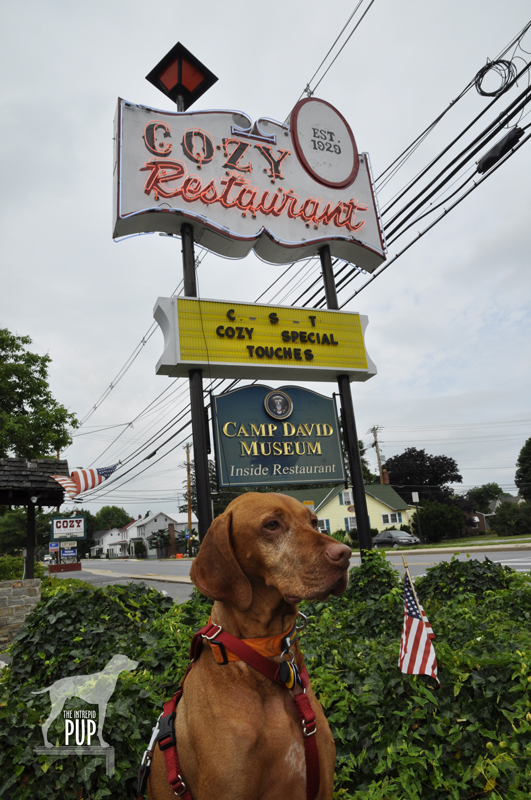 A modest-sized room off the main dining area serves as the gallery chock full of photographs and memorabilia highlighting the Cozy’s Camp David connections to 13 presidential administrations and counting. There’s a perfect photo opp beneath a rustic “Camp David” sign, but sorry, no dogs allowed inside.
A modest-sized room off the main dining area serves as the gallery chock full of photographs and memorabilia highlighting the Cozy’s Camp David connections to 13 presidential administrations and counting. There’s a perfect photo opp beneath a rustic “Camp David” sign, but sorry, no dogs allowed inside.
For security reasons Camp David doesn’t show up on the Park Service trail maps, but area residents are accustomed to Camp David hubbub and seem happy enough to demystify things for you. One nice lady we met (alas, didn’t catch a name) recalled how broadcast journalist “Barbara Wawa” would hike up her skirt and vault a fence so she’d be the first out to the helicopters that used the parking lot of a local car dealership as a landing pad. Time was that President Franklin D. Roosevelt’s Secret Service agents stayed at the Cozy. JFK’s cabinet members often dined there, and the Cozy was the lodging of choice for guests attending President George H. W. Bush’s daughter Doro’s wedding at Camp David in 1992. And then there were tales of television reporters who had their favorite yards or trees downtown that they’d always use as backdrops for reporting “live from Camp David”…even though all the locals watching the evening news knew better.
Yet, despite the G8 Summit being held at Camp David just two months ago (May 2012), Team Tavish detected a hint of wistfulness in our new-found Thurmont-er friend. “It’s not quite like it used to be,” she said. “Now all those world leaders just Skype and email each other, you know. And President Obama really seems to be more of a beach kind of guy, so I don’t think he gets up here as much as some of the other presidents did.”
Everything in the Cozy’s various displays has been donated over the years by visiting White House staffers, dignitaries, and members of a generous press corps. It seems that the bus tours that stop for repast at the Cozy are a pretty discerning bunch, and it apparently hasn’t gone unnoticed that the Obama section of the Camp David Museum is a little sparse. Don’t blame the Cozy, however, as they know their audience and aim to please. They’ve submitted requests for items through “official channels” and have even improvised by adding a few generic images of the First Family. But at the end of the day, Team Tavish had to concur with the assessment of our casual acquaintance: “Photos downloaded from the internet somehow just don’t cut it.”
So, if someone at the White House happens to be reading this (and we know hope you are!), the Intrepid Pup encourages you to “throw a bone” to the Cozy’s Camp David Museum in the way of some Obama swag and a few recent photos of the president at Camp David. Who knows? It might just translate to some key votes from Thurmont-ers and Cozy-philes in the November elections.


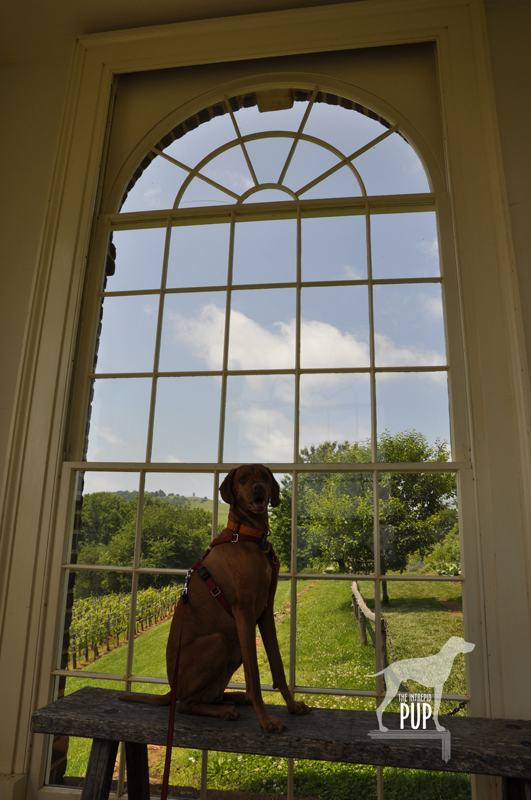
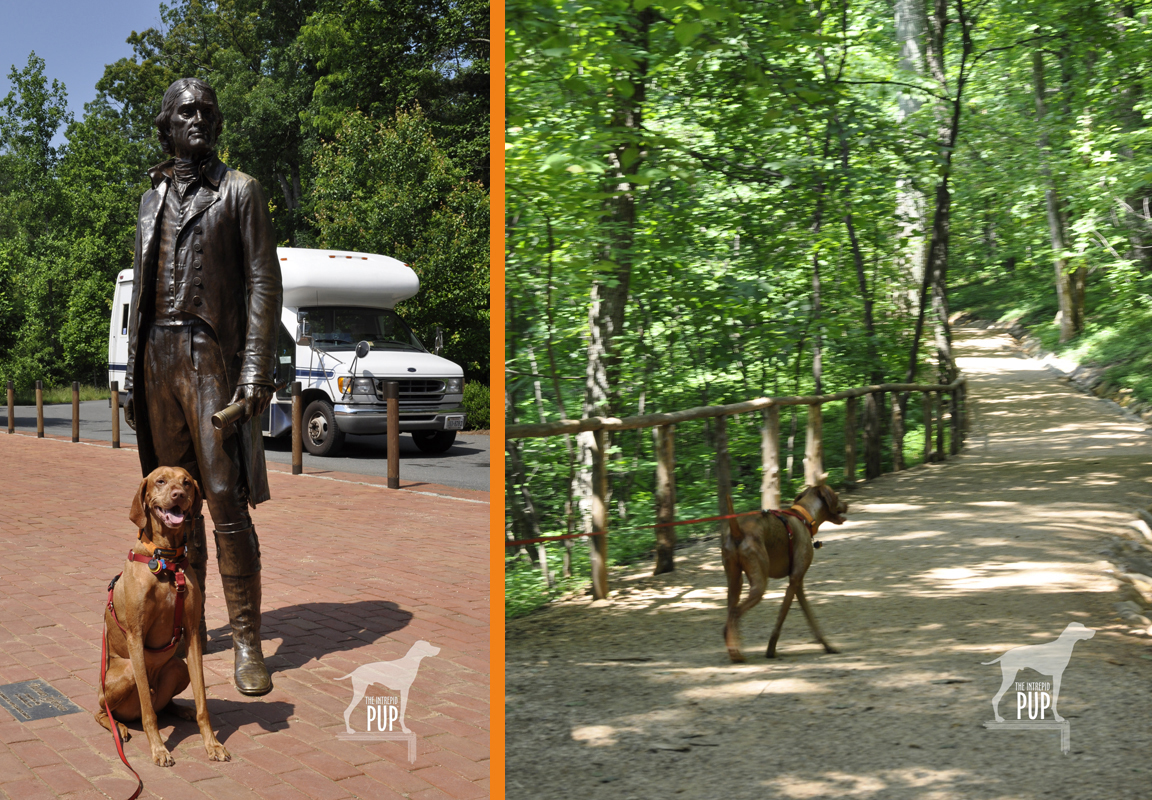
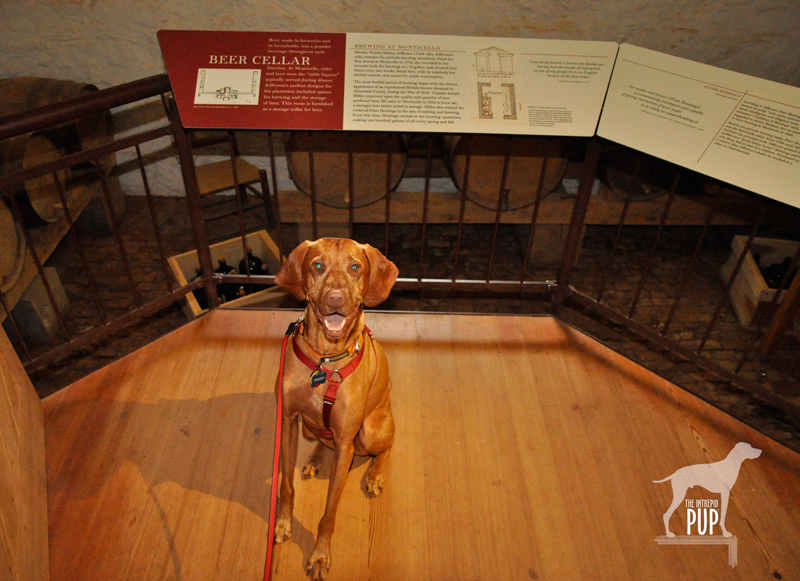
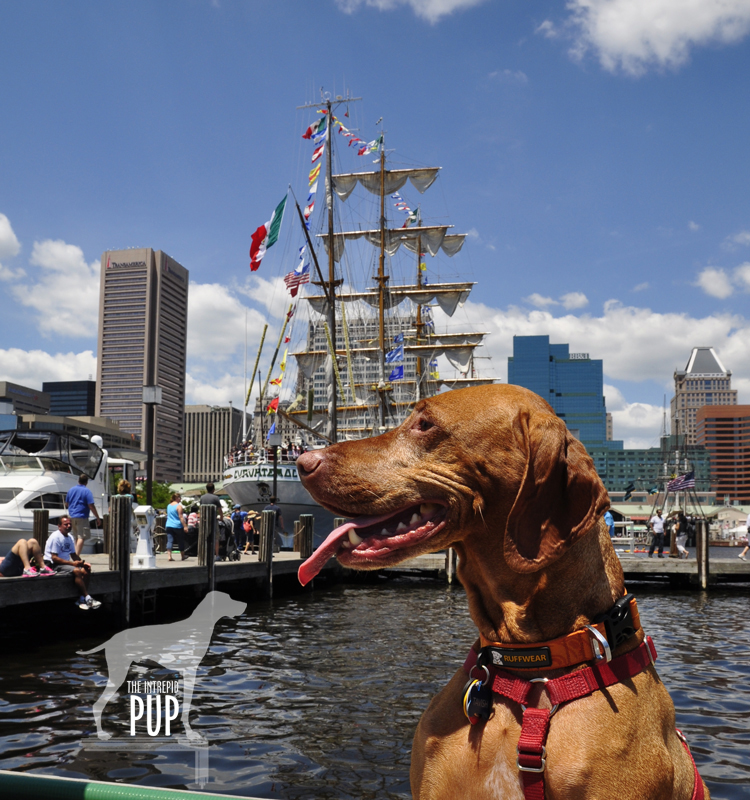
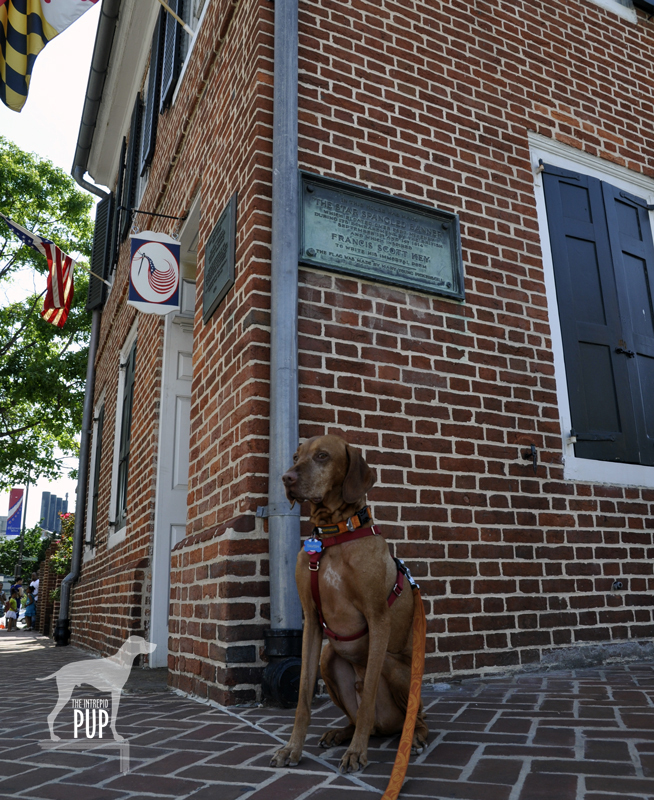
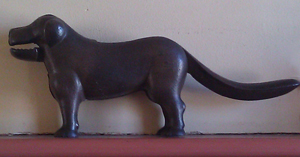
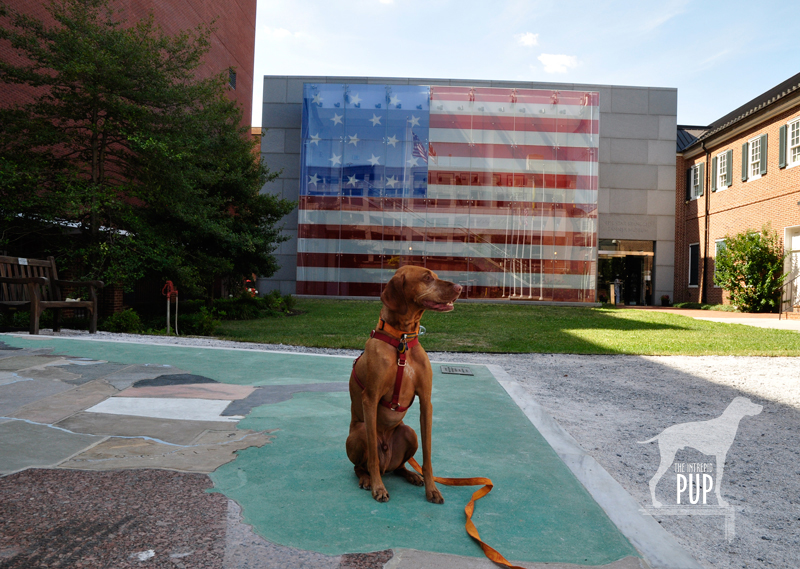
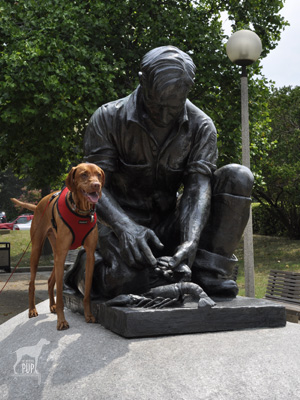
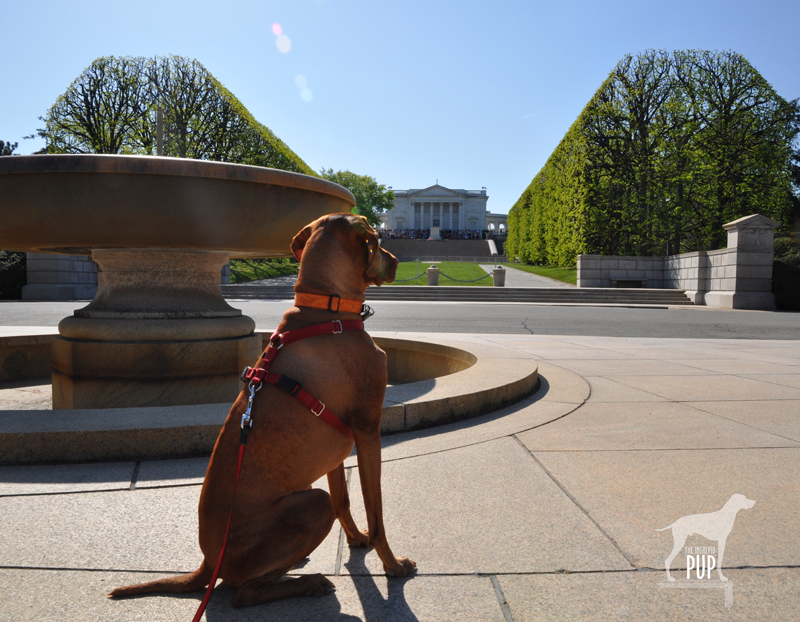
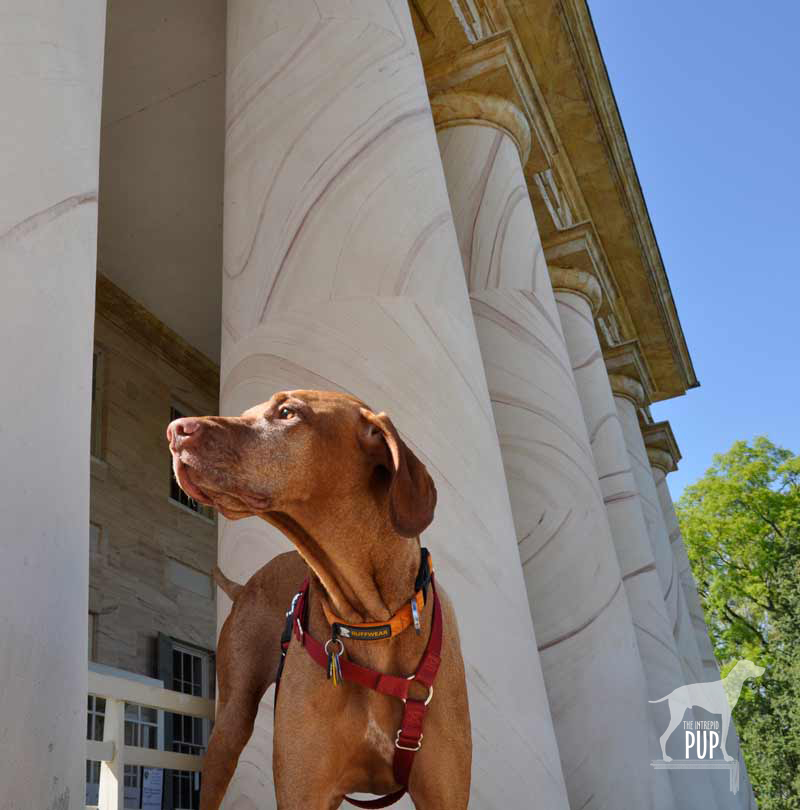
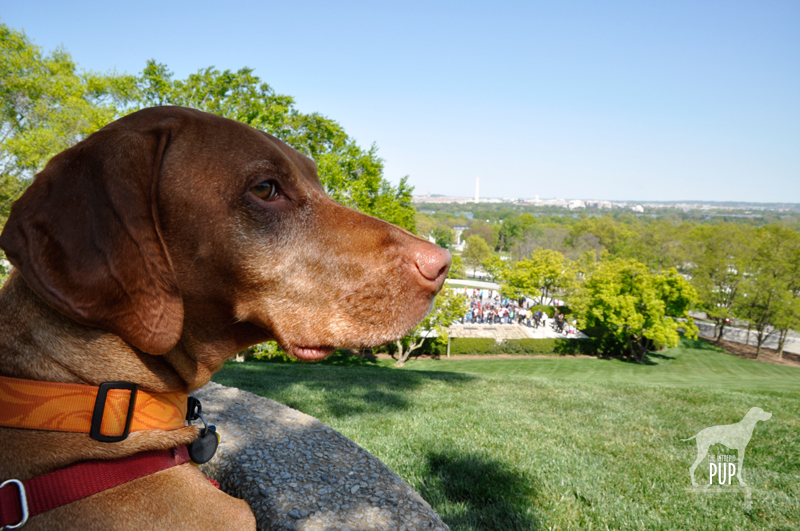

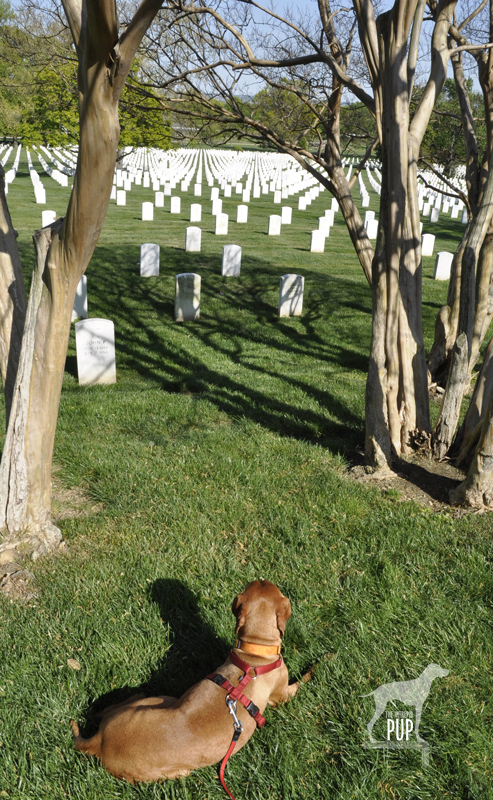 For as many times as we’ve visited Arlington National Cemetery over the years, it wasn’t until a friend and fellow dog owner recently mentioned it, that we were aware that leashed dogs are allowed on the grounds. Unless they’re service animals, they aren’t permitted in the visitor center buildings or inside Arlington House.
For as many times as we’ve visited Arlington National Cemetery over the years, it wasn’t until a friend and fellow dog owner recently mentioned it, that we were aware that leashed dogs are allowed on the grounds. Unless they’re service animals, they aren’t permitted in the visitor center buildings or inside Arlington House.









